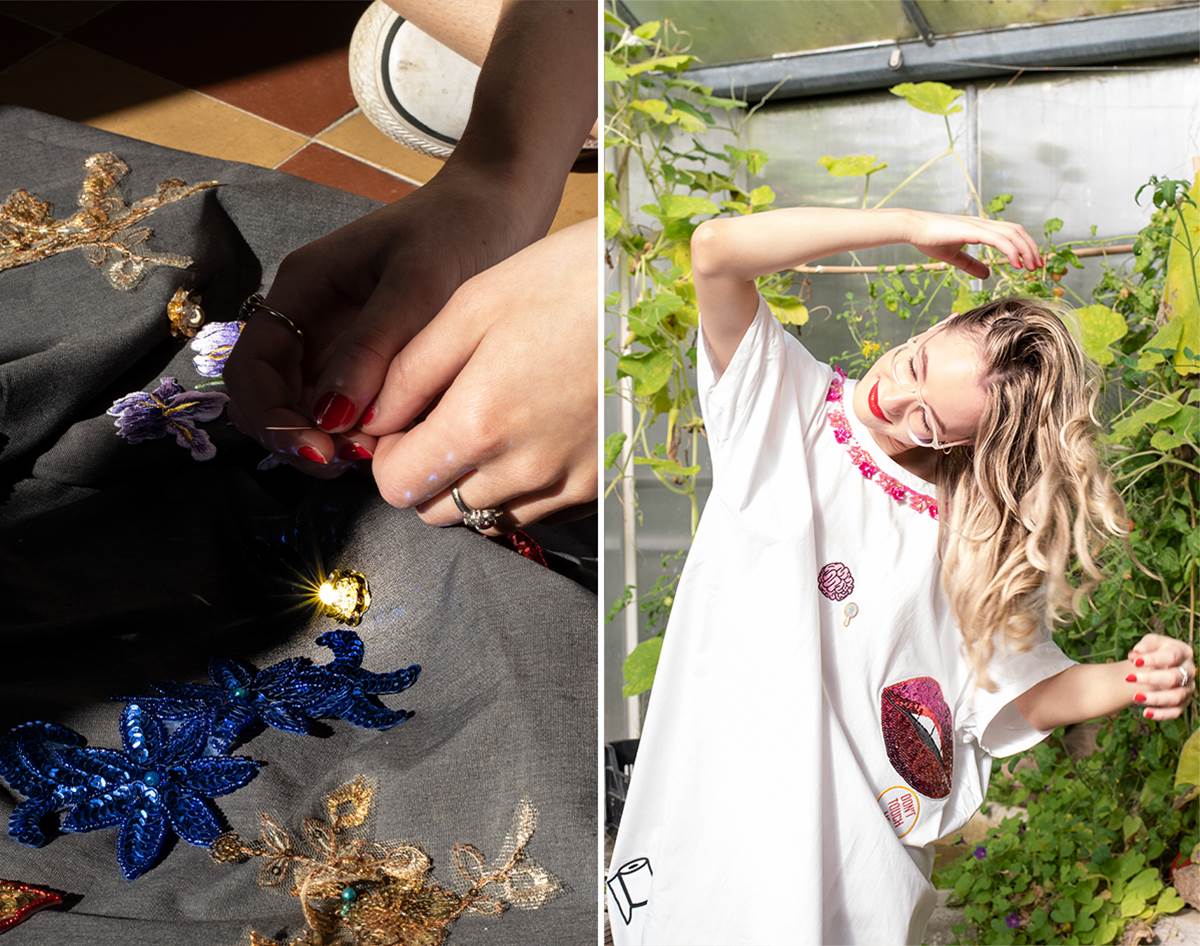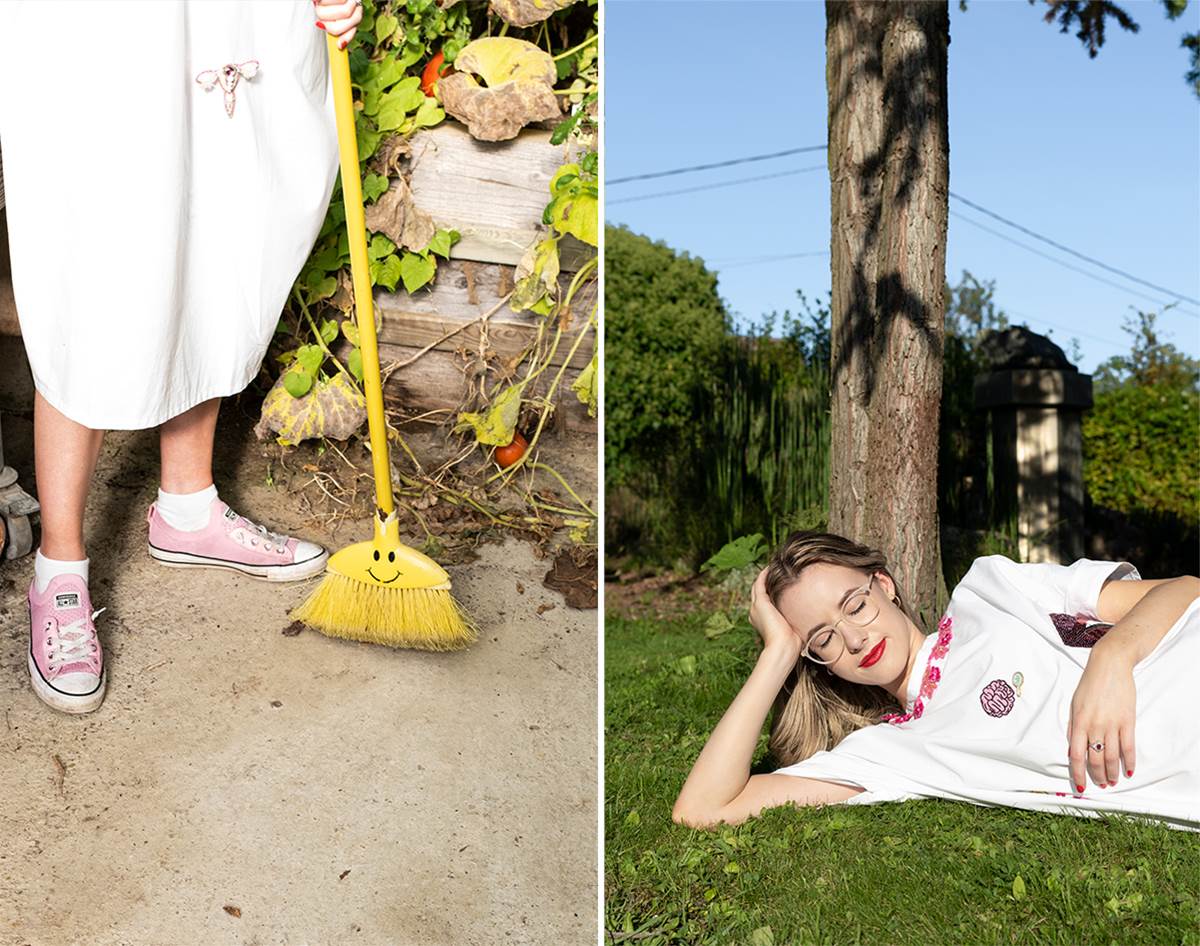a day in the life of creative technology artist jess coldrey
Plus, take a stickybeak around the botanical garden near Paris where Jess is currently artist-in-residence linking endometriosis and fashion.
 Jess Coldrey uses design and engineering to connect people with technology in seriously innovative ways. At the moment she’s exploring how endometriosis can be understood better using conceptual fashion. Her unfettered curiosity for both the natural and technological works has recently led Jess to an art residency in the middle of a botanical garden in Marnay sur Seine in France (woah, indeed!). We caught up with her to ask about her work and what a day in her world looks like. Hint: there’s a few French pastries involved.
Jess Coldrey uses design and engineering to connect people with technology in seriously innovative ways. At the moment she’s exploring how endometriosis can be understood better using conceptual fashion. Her unfettered curiosity for both the natural and technological works has recently led Jess to an art residency in the middle of a botanical garden in Marnay sur Seine in France (woah, indeed!). We caught up with her to ask about her work and what a day in her world looks like. Hint: there’s a few French pastries involved. Hi Jess! Can you tell us a little bit about yourself and what you do? I’m a creative technologist and social scientist passionate about understanding how people’s interactions with nature and technology shape the future. I spend half my time in the art world and half my time in the world of engineering. Imagination plays a significant role in what I do, from researching recycled plastics use in roads to advising creative strategy for major transport projects.
Hi Jess! Can you tell us a little bit about yourself and what you do? I’m a creative technologist and social scientist passionate about understanding how people’s interactions with nature and technology shape the future. I spend half my time in the art world and half my time in the world of engineering. Imagination plays a significant role in what I do, from researching recycled plastics use in roads to advising creative strategy for major transport projects.
What does being a creative technologist mean to you? Technology opens a lot of possibilities for exploring the ideas of the future. In my art practice, being a creative technologist means using engineering processes to create pieces, whether they’re born from algorithms, electronics or 3D printers. I like applying technology to explore social issues from different angles and spark conversations rather than just serve a utilitarian purpose. It’s more about that cultural element of how you can use technology in a way that really moves people and how we interact with technology. What did you study and how did this path lead you to the work you do today? I always wanted to be an artist and to go to art school, and ended up studying a Bachelor of Visual Arts and Bachelor of Arts double degree at Monash. There, I studied human geography and became really interested in how industry changes over time and how that affects nature and social demographics. I also became really interested in sustainability, which led to a curiosity about engineering and design solutions for world problems. I started to integrate technology and automation into my work, then explored it as an artwork theme while I worked in the engineering section during uni.
What did you study and how did this path lead you to the work you do today? I always wanted to be an artist and to go to art school, and ended up studying a Bachelor of Visual Arts and Bachelor of Arts double degree at Monash. There, I studied human geography and became really interested in how industry changes over time and how that affects nature and social demographics. I also became really interested in sustainability, which led to a curiosity about engineering and design solutions for world problems. I started to integrate technology and automation into my work, then explored it as an artwork theme while I worked in the engineering section during uni.
What was one of your most important takeaways from your time studying at Monash that helped you develop your creative voice? I think the most important thing about Monash and specifically the Visual Arts degree was its very unique structure. At Monash you had the freedom to pursue any method of art-making that helped you explore your ideas across different art subjects. I really thought of it as a way to build a diverse tool kit rather than becoming a technical master at one thing. I think that really shaped my career as an artist. Studying across all the different faculties and getting a wider tool kit helped me form a really kaleidoscopic view of the world and bring that broad view of how different people navigate the world into my art practice. It also helped me dream big and imagine how my creative voice could be used in other fields. This helped me work towards the 2021 Victorian Government John Monash Scholarship, enabling me to study a Master in Humanitarian Engineering in the UK this year. What are you currently working on while you’re in France? I’m an artist in residence at the Botanic Gardens of Marnay sur Seine in France – a beautiful, flower-filled traditional village about an hour and a half from Paris by train. I’m working here on-and-off over the next few months on my latest project, The Australia-France Endometriosis Pain Visualisation Project, funded by the Australian French Association for Innovation and Research. My work is inspired by my endometriosis diagnosis a few months ago, along with the creative community workshops I’m running across Melbourne and Paris to communicate pelvic pain. I'm exploring how endo can be understood and discussed more effectively using conceptual fashion designs on hospital gowns, robotics, drones and photography. My hope is to help others get the support they need sooner.
What are you currently working on while you’re in France? I’m an artist in residence at the Botanic Gardens of Marnay sur Seine in France – a beautiful, flower-filled traditional village about an hour and a half from Paris by train. I’m working here on-and-off over the next few months on my latest project, The Australia-France Endometriosis Pain Visualisation Project, funded by the Australian French Association for Innovation and Research. My work is inspired by my endometriosis diagnosis a few months ago, along with the creative community workshops I’m running across Melbourne and Paris to communicate pelvic pain. I'm exploring how endo can be understood and discussed more effectively using conceptual fashion designs on hospital gowns, robotics, drones and photography. My hope is to help others get the support they need sooner. A typical day in Jess’s creative life in Marnay sur Seine, France
A typical day in Jess’s creative life in Marnay sur Seine, France
Morning
I love to start the day with a fresh chocolate croissant from the village.
I’m a big planner and write a to-do list every morning – usually with a combo of creative projects, engineering work, writing and fun activities. I choose which things to do first using a random number generator to make it a game!
I like to set myself tasks like “find three options for fabrics then pick one” or “create a spreadsheet of project contacts and email five” to keep myself from swimming in decisions all day. I try to be effective in my art practice and have an engineer’s love for processes. Afternoon
Afternoon
Today I did about 10 hours of sewing. Sequins, patches, ribbons, and brooches all, finishing off my designs for tonight's exhibition was a big task.
Generally, I go for a walk in the afternoon. I have a plant scanning app on my phone and try to learn the name of a new plant every day. I found a plant that inspired the artificial bubble-gum flavour! Evening
Evening
Today, after some frantic last-minute art installing, my exhibition was draped around the gardens, and guests from local towns visited. We enjoyed the sunset over cocktails and ended the evening with an impromptu pasta and wine session with some visiting American artists.
This chinwag with Jess Coldrey was brought to you by our mates at Monash Art, Design and Architecture. If you’re keen to learn more about their inclusive, creative community and industry-led course offerings, head this-a-way to the Monash University website.

